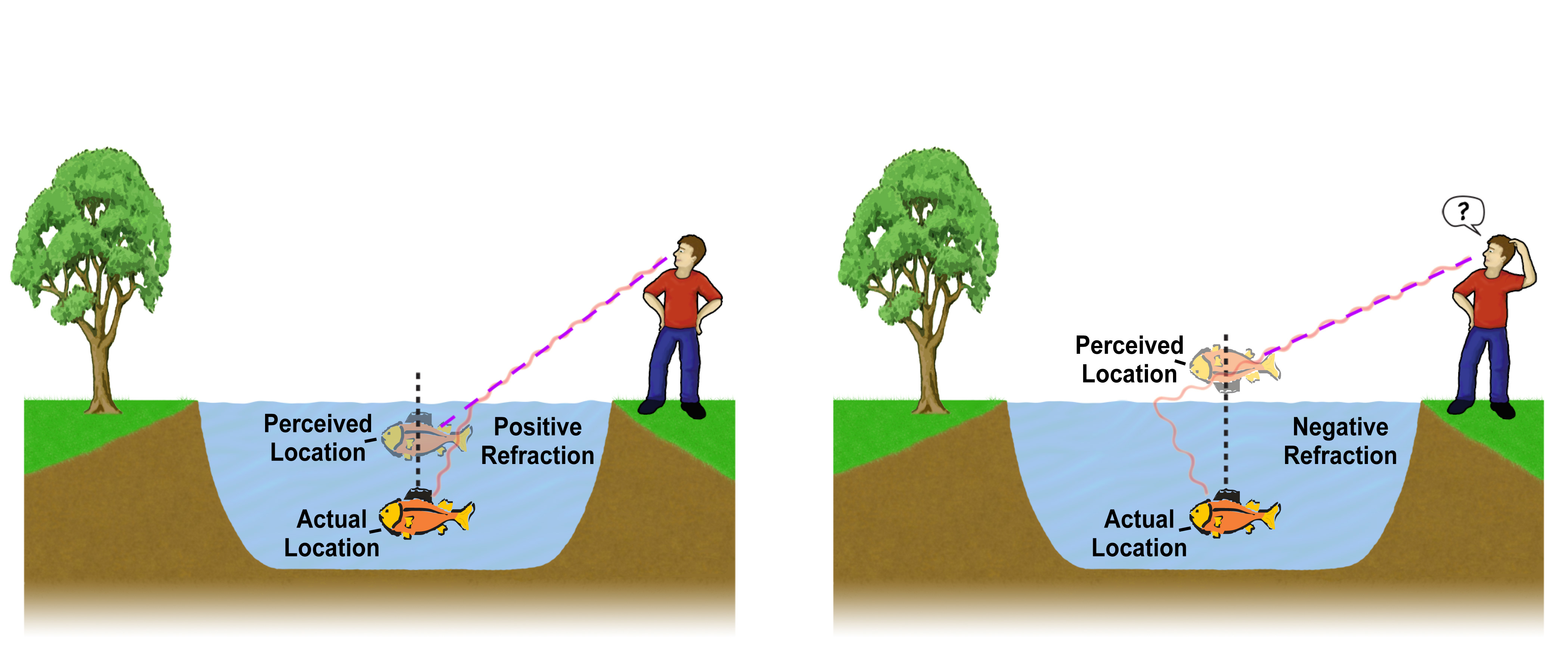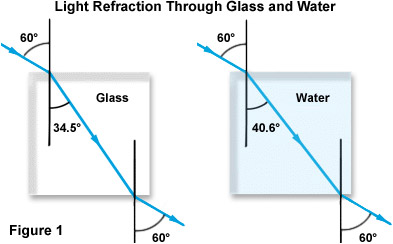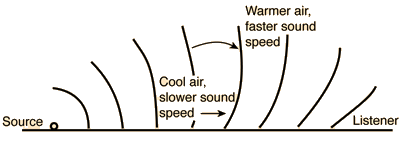Refraction of Plane Water Waves
1. Water waves undergo refraction (bending) when its speed changes. Refraction is accompanied by a change in speed and wavelength of the waves.

2. Water waves travel faster (with higher velocity, v) on the surface of deep water then they do on shallow water. Thus, if water waves are passing from deep into shallow water, they also will slow down. This decrease in speed will also be accompanied by a decrease in wavelength. The change of speed of the wave causes refraction.
3. After refraction, the wave has the same frequency,but a different speed, wavelength and direction.
4. When a water wave travels from deep water into shallow water, the wave is refracted towards normal. Conversely, the wave is refracted away from the normal when the water wave travels from shallow water into deep water.
Refraction of Light
1. A swimming pool seems much shallower than it actually is; a spoon appears bent when part of it is in water and a boy's legs look shorter when immersed in pool. All these effects are due to the refraction of light.
2. When a ray propagates from one medium to an optically dense medium, the ray refracts towards the normal. Conversely, a ray propagating from one medium to an optically less dense medium is refracted away from the normal.

3. The speed of light decreases as it propagates in the glass block, causing it to alter the direction of propagation. Since the incident ray and the refracted ray are from the same source, the frequency remains the same. Hence, the wavelength of the ray in the glass is shorter than the ray in the air.

Source: http://micro.magnet.fsu.edu/optics/lightandcolor/images/refractionfigure1.jpg
Refraction of Sound waves
1. The sound of a moving train at a distance is clearer at night than that in the day time. This is due to the effects of the refraction of sound waves.
2. At night-time, the layers of air close to the ground are cooler than the layers further from the ground.
3. Sound travels at a slower speed in cold air. As a result, the sound waves are refracted in the path of a curve (due to total internal reflection) towards the ground instead of disappearing into the upper layers of the air.

Source: http://hyperphysics.phy-astr.gsu.edu/hbase/sound/imgsou/refr2.gif
1 comment:
Appreciate thhis blog post
Post a Comment